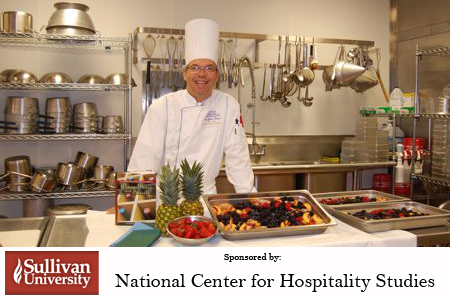
When was the last time you bought herbs and spices for your kitchen pantry? A week ago, months, perhaps as a gift on your wedding day 25 years ago?!
Whenever I’m teaching a class and the subject of herbs and spices comes up, invariably there is embarrassment and shame among my students. Some know better but others are shocked when I tell them to toss their stash from the 80’s and start over.
While most people go out of their way to source the freshest fish or most pristine vegetables, they will relegate the finishing touch to most dishes to a dusty bottle of granulated garlic or a 2 pound plastic tub of black pepper dust. In countries around the world, and even in certain parts of this country the notion of a “kitchen spice rack” doesn’t exist.
Herbs are picked and used fresh in their various stages of maturity. When the herb has finished, the seeds are saved and the remaining stems and leaves are dried by hand or in a dehydrator. Spices are harvested and stored whole until they are processed for home or restaurant use.
In the same way that a chef would hit the city fish market or the consumer would shop at the farmer’s market spices are displayed in block long markets filled with multicolored barrels of pungency and aroma. Only what is needed short-term is purchased and prepped for that particular dish at that particular time. We might cheat and grind a bit extra, but not every kitchen has airtight Tupperware or mason jars.
Spices hold much better in their whole form, as seed or stick. Once we grind the spice we expose it to the air and moisture and oxidation begins. Ground spices oftentimes will have an additional anti- clumping agent added, ground fresh and used immediately there is no need to do that. The concept of buying just what you need, on a daily basis, is one which we have gotten away from in the past few generations. We use our time differently than we once did and in doing so we have prioritized our market buying into manageable clumps of time.
Thinking of daily shopping paralyzes most people as that means climbing in a car and diving somewhere. Marketing is created to induce bulk buying, based on coupons and clearance sales with the anchor of unlimited refrigeration giving us peace of mind. There is never a better time to re-consider our lifestyle than when the fridge breaks down. Suddenly that large box of food has a ticking clock on the front of it signaling our weekly investment going down the garbage disposal while we scramble to find a cooler and ice.
In the case of herbs and spices most of the modern conveniences and our habits are counterintuitive to the quality of those aromatics. The same fridge that keeps our beef and milk at a cool 38 degrees is hard on fresh herbs, blackening some like basil before we can use it all. Buying in bulk may save us in dry goods and even staples like juice and bagged carrots, but as we noted earlier a 2 pound tub of black pepper will last most households until the first son graduates college.
The best herbs come out of your garden or window box; failing that, buy small batches from the market or from the grocery. Most herbs are better stored loosely with a damp towel covering them. If the fridge is too cold pick a spot in the fridge that gets a blast every now and then from room temp air just to warm things up a bit. Most herbs don’t freeze without blackening, drying them is a better alternative.
Hanging in a cool dry place is best, hanging the second and third cutting yields a product that dries more quickly as the leaves dry up as the season progresses. If you have trouble getting them dry before they mold you may have to invest in a sturdy dehydrator. Don’t buy cheap, you’ll find yourself using this piece of equipment frequently (chilies, tomatoes, herbs and mushrooms).
I’ve found that while bulk spices may work for a restaurant, they stale quickly in a consumer’s kitchen. When we lived in New York City we were blessed to have ethnic markets that were close and fairly traditional. They had bulk whole spices that required only a trusty spice grinder or mortar and pestle to use and we could buy as little as we needed.
Most of these markets were located quite conveniently close to subway stations so it was easy to shop daily on your way home from work. Lexington has markets every bit as ethnic and diverse and with a little more travel time I’ve found that I can duplicate the same success we had in NYC.
To further the notion of small batch spice several companies have made it a point to visit Sullivan University culinary and The Sage Rabbit. They offer small batch spices and dried herbs that are locally grown or are sourced and delivered from their native areas within hours of processing them. White pepper arrived at The Rabbit last week from Souq Lexington, a small startup spice market located in Lexington that sources their product from a family business in Morocco.
Within hours of ordering my 2 ounces of white pepper was ground, shipped and delivered to me and it was like no other white pepper I’ve ever had. My chef de cuisine was blown away by the floral quality and the clean heat of the spice.
Being a family business it was appealing to me to support another family business. The fact that the spice was superior in quality to the name brands is obviously a product of small scale production and the majority of larger restaurants will still opt for large batches that are conveniently packaged and priced.
For the rest of us it is a matter of gleaning our gardens and drying our herbs, saving our seeds and searching out small batches at small markets that truly represent what a spice or herb should be. Toss out the old jars and invest some time and money into your spices and herbs, it can make all the difference in your finished dish.

John Foster is an executive chef who heads the culinary program at Sullivan University’s Lexington campus. A New York native, Foster has been active in the Lexington culinary scene and a promoter of local and seasonal foods for more than 20 years. The French Culinary Institute-trained chef has been the executive chef of his former restaurant, Harvest, and now his Chevy Chase eatery, The Sage Rabbit.
To read more from Chef John Foster, including his recipes, click here.




















